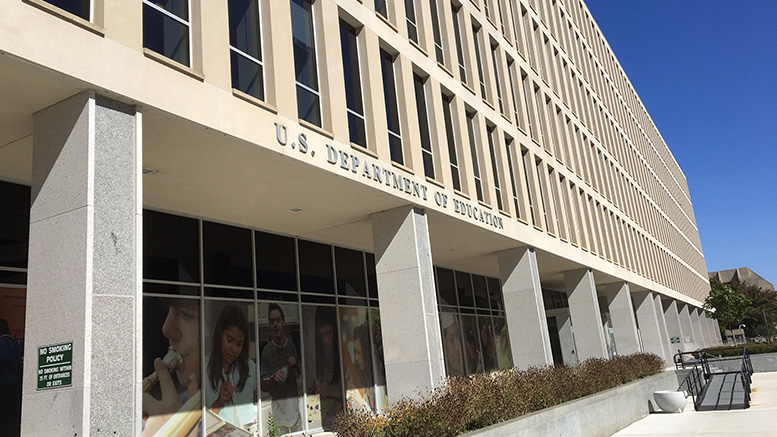The U.S. Education Department (ED) is expected to publish in late June or early July a final regulation to eliminate the so-called “gainful employment” (GE) rule, which was promulgated during the Obama administration mainly to ensure that for-profit institutions were not burdening students with college loans that they could not repay.
ED in April sent its final rule for review to the White House Office of Management and Budget, which is the last required step before the rule is published.
GE proponents have noted that if ED eliminates the regulation, it may not go away permanently. Congress might choose to alter the regulation in the reauthorization of the Higher Education Act (HEA), which would require the department to again address the issue.
More than 350,000 postsecondary graduates carrying $7.5 billion in debt attended career programs below minimum standards, according to an analysis of federal data by The Institute for College Access and Success (TICAS). That figure doesn’t include students in career programs who didn’t graduate and incurred student debt, it added.
Nearly 98 percent of these programs were offered by for-profit colleges such as ITT and Argosy Colleges, TICAS said.
Keeping GE in some form
Although the GE rule focuses on for-profits, Title IV-eligible certificate programs at community colleges also fall under the rules, and most public two-year colleges have faced costly burdens in complying with the reporting requirements, according to community college advocates.
Despite those problems, organizations such as the American Association of Community Colleges (AACC) and the Association of Community College Trustees (ACCT) don’t want ED to entirely rescind the regulation.
“Our associations continue to support debt-to-earnings (D/E) as an appropriate accountability metric to determine gainful employment program eligibility,” the association said in joint comments last fall to the department on the proposed rule change.
In fact, AACC and ACCT agree with the ED proposal that data on outcomes, debt and earnings should not be limited to GE programs.
“It is appropriate to show earnings data for all higher education programs,” the groups said in their comments to ED. “Other program-level outcome data are also relevant, including the rate of borrowing, as only 12% of all community college students borrow.”
Relying more on the Scorecard
Instead of using the D/E metric, the department wants to expand data collected and shared on its College Scorecard to include program-level information at all institutions participating in federal student aid programs. That would include enrollments, completion rate, cost, accreditation status and whether the program meets the requirements for state licensure. Median debt and median earnings also would be included. ED has already started to provide some of this data.
However, TICAS President James Kvaal — who was instrumental in developing the GE framework in the Obama administration — said there’s a big difference between posting the information on the ED website and actually sharing the information with all prospective students who are considering enrolling in these programs. AACC is concerned about the potential burden of certain information dissemination requirements in this area.
Should ED nix the regulation, there are still ways it could survive, TICAS noted. First, ED must continue to enforce the current rule until July 2020, the earliest possible effective date for GE’s repeal, it said. However, ED has effectively avoided implementing core parts of the rule, though disclosure requirements remain in effect. Second, 18 state attorneys general have filed suit against the department for failing to carry out the rule. States also may impose their own stricter rules on for-profit colleges separate from GE.
GE will be a major topic in the ongoing HEA reauthorization. TICAS noted there is interest in both chambers of Congress to hold colleges more accountable for student loan repayment, with Democrats focusing on for-profit colleges.
AACC also has proposed gathering needed data on all college programs as part of its recommendations to reauthorize HEA. This can be done through creating a unit record data system that links to graduates’ earnings. In addition, AACC is advocating for institutional flexibility to reduce student loan amounts in defined circumstances, which could address some of the same concerns raised through the GE regulations.

